 |
||
|
||
| ||
I'd like to explain right away why two different products for different price segments are examined in one article. The fact is, MSI launched these two graphics cards much later than their predecessors. They appeared after we already published our roundups of graphics cards on these GPUs. However, these cards should be reviewed. These cards are reviewed in the same article, because they come from the same manufacturer. Moreover, they are designed and manufactured by MSI, not just bought from AMD/NVIDIA as reference cards, as it usually happens. We wrote much about the GeForce 8800 GT. So you can read our baseline article and the large roundup. It's currently the most expedient graphics card in the market, because it offers the best price/performance ratio, proved by our i3DSpeed. The market is full with such cards already. Your have a wide choice, which is also expanded by various combinations of core and memory frequencies. This very graphics card from MSI belongs to the group of the most popular 8800 GT cards with slightly increased operating frequencies (+40-50 MHz). What concerns the RADEON HD 3650, we've recently examined this card. It's a copy of the RADEON HD 2600 manufactured by a thinner fabrication process, so it has lower prime costs, which affects its retail prices. Operating frequencies of the 3650 cards fall in between those of the 2600 PRO and the 2600 XT. As a rule, they are closer to the latter. That'll do for an introduction. Let's have a look at the cards. Graphics Cards
Both graphics cards are apparently based on reference designs with minor changes. On the whole, we didn't notice any significant simplifications that could deteriorate operating stability of the cards. Both cards have TV-Out with a unique jack. You will need a special bundled adapter to output video to a TV-set via S-Video or RCA. You can read about the TV-Out in more detail here. Analog monitors with d-Sub (VGA) interface are connected with special DVI-to-d-Sub adapters. The bundle also includes DVI-to-HDMI adapters (these graphics cards support video/audio transfer to HDMI receivers), so there should be no problems with such monitors. Maximum resolutions and frequencies:
What concerns MPEG2 playback features (DVD-Video), we analyzed this issue in 2002. Little has changed since that time. CPU load during video playback on modern graphics cards does not exceed 25%. What concerns HDTV. You can read one review here. GeForce 8800 GT cards require additional power supply, so each card is bundled with an adapter from molex to 6-pin, even though all modern PSUs are equipped with these cables. Now let's proceed to the cooling systems. We monitored temperatures using RivaTuner (written by A.Nikolaychuk AKA Unwinder). Here are the results: MSI RADEON HD 3650 512MB (R3650-T2D512) PCI-E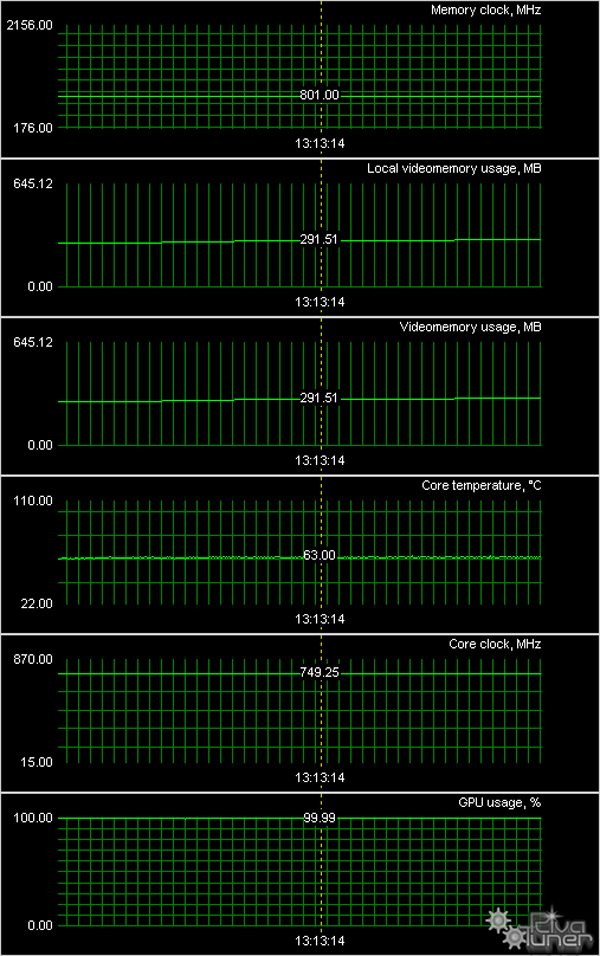 MSI GeForce 8800 GT Silent 512MB (NX8800GT-T2D512E) PCI-E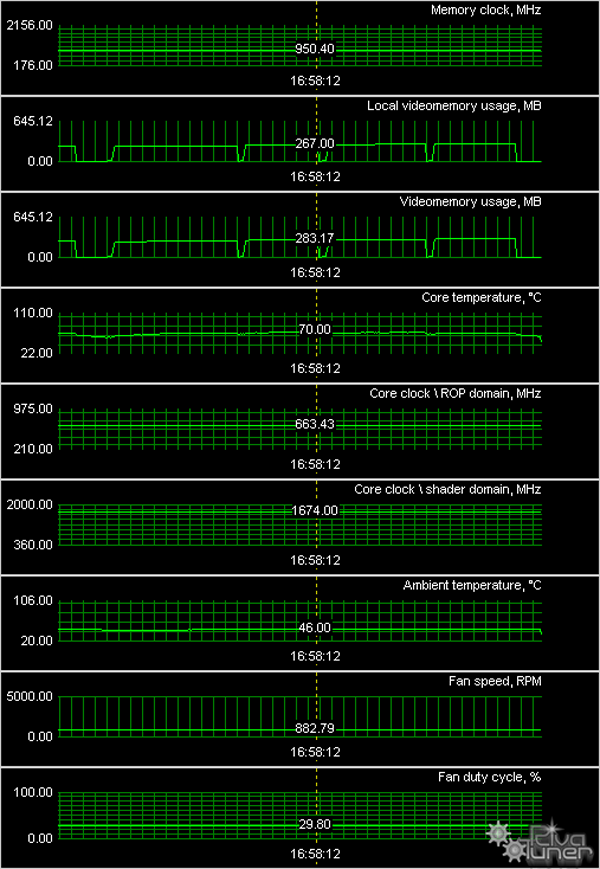
As we can see, both cooling systems have proved their efficiency even though both cards operate at increased frequencies. Moreover, the MSI RADEON HD 3650 512MB (R3650-T2D512) PCI-E can be overclocked to 900 MHz (core), which is a very good result. Besides, maximum core temperature does not exceed 67B°C in this case. This GPU is manufactured by the 55-nm fabrication process now, and its overclocking potential has grown since the 2600 family. However, we shall stick to our tradition and won't focus on overclocking, because it depends on a given sample (there are also many other factors that have to do with a given computer configuration and PSU), so we cannot draw conclusions. BundlesThe basic bundle should include: User's Manual, CD with drivers and utilities, a DVI-to-VGA adapter, a DVI-to-HMDI adapter, and a component output adapter (TV-out). And now let's see what other accessories are bundled with each card. PackagesInstallation and DriversTestbed configuration:
BenchmarksWe used the following benchmarks:
Performance resultsIf you have a decent understanding of 3D graphics, you may draw your own conclusions for the charts below. However, if you are interested in our comments on test results, you may read them after each test. Anything that is important to beginners and those who are new to the world of graphics cards will be explained in detail in the comments. First of all, you should look through our reference materials on modern graphics cards and their GPUs. Be sure to note the operating frequencies, support for modern technologies (shaders), as well as the pipeline architecture. ATI RADEON X1300-1600-1800-1900 Reference If you have just begun realizing how large the selection to choose a graphics card is, don't worry, our 3D Graphics section offers articles about 3D basics (you will still have to understand them—when you run a game and open its options, you'll see such notions as textures, lighting, etc.) as well as new product reviews. We also publish monthly i3DSpeed that sums up all comparisons of graphics cards for various price ranges. Thirdly, have a look at the test results. We are not going to analyze each test in this article, primarily because for us it makes sense to draw a general bottom line in the end. We will, however, make sure that we make our readers aware of anything unusual. All tests are divided into two groups (brighter colors are used for the 8800 and its competitors, pastel colors—for the 3650 and its competitors). Speaking of the old drivers used in our tests (169.xx), you should know that NVIDIA has not released any new drivers for the 8800 cards early in March. And we are not going to use any third-party mods for obvious reasons (90% users don't use them). S.T.A.L.K.E.R.FPS CHARTS: S.T.A.L.K.E.R.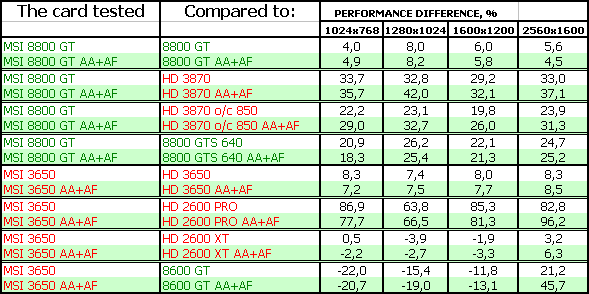 CRYSIS, Rescue, DX9, HighFPS CHARTS: CRYSIS, Rescue, DX9, High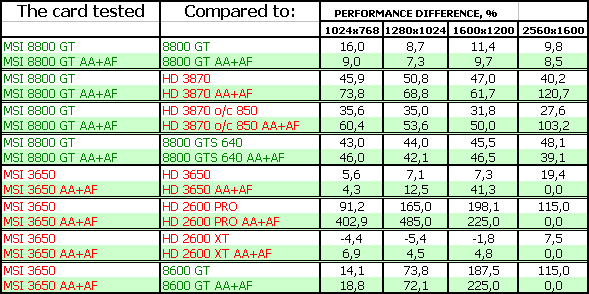 CRYSIS, Harbor, DX9, HighFPS CHARTS: CRYSIS, Harbor, DX9, High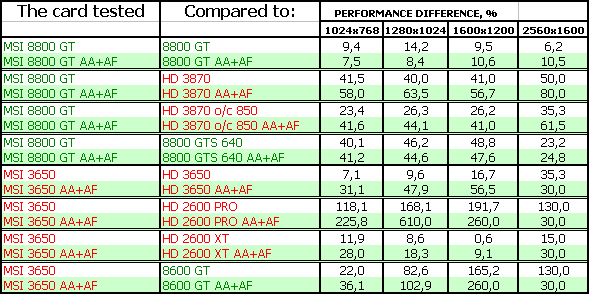 CRYSIS, Rescue, DX10, Very HighFPS CHARTS: CRYSIS, Rescue, DX10, Very High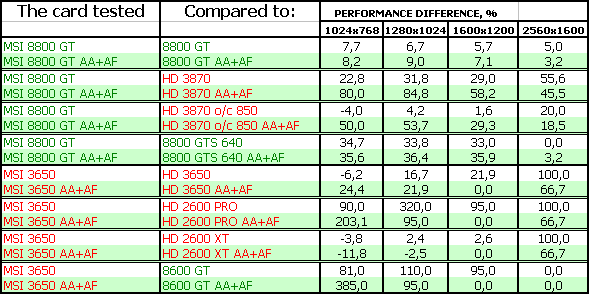 CRYSIS, Harbor, DX10, Very HighFPS CHARTS: CRYSIS, Harbor, DX10, Very High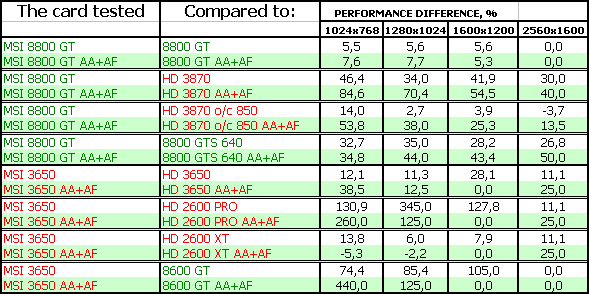 Call Of JuarezFPS CHARTS: CoJ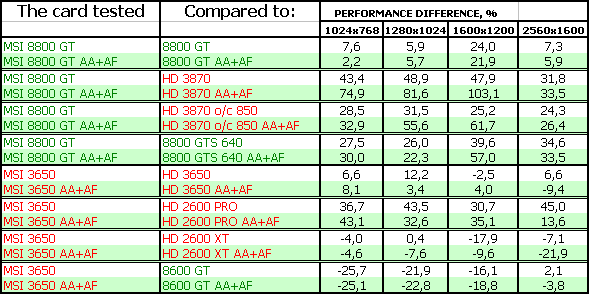 Company Of HeroesFPS CHARTS: CoH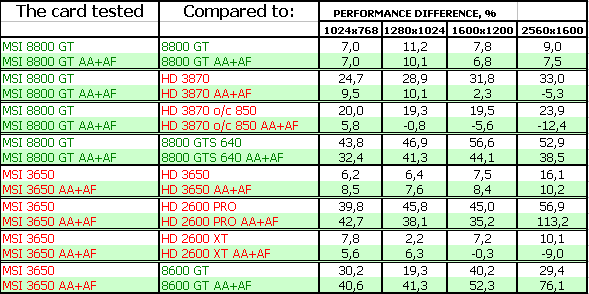 3DMark05: MARKSFPS CHARTS: 3DMark05 MARKS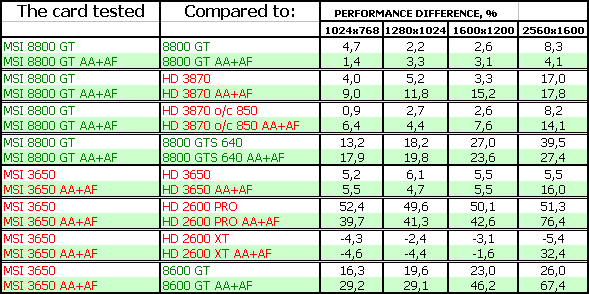 3DMark06: SHADER 2.0 MARKSFPS CHARTS: 3DMark06 SM2.0 MARKS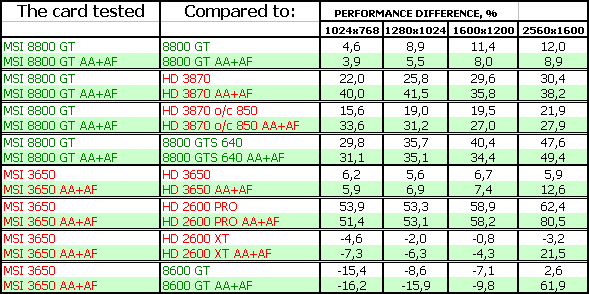 3DMark06: SHADER 3.0 MARKSFPS CHARTS: 3DMark06 SM3.0 MARKS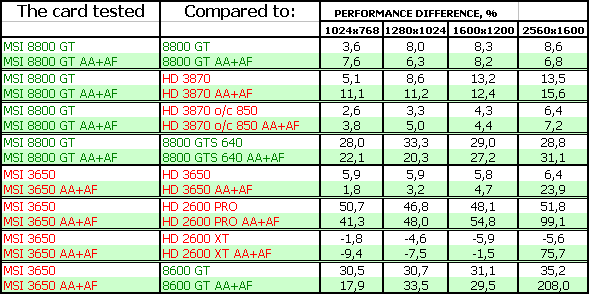 ConclusionsI think everything is clear with the RADEON 3650. I've already written that it's a copy of the 2600XT, but operating at a lower frequency. However, it becomes fashionable to manufacture such cards with 512 MB of memory. According to our tests, the 3650 sometimes even outperforms the 2600XT operating at higher frequencies, but being equipped only with 256 MB. However, you may ignore this fact, because such results are demonstrated when its performance in games is below tolerable. I repeat that we test all graphics cards in games configured for maximum quality, that is with all options enabled. So weaker graphics cards naturally demonstrate low performance in such conditions. You should understand that you can hardly play CRYSIS-like games without reducing quality settings, when you use a graphics card for up to $150. You can reduce the resolution, of course. But it may spoil your impressions of a game even more. MSI RADEON HD 3650 512MB (R3650-T2D512) PCI-E operates at slightly higher frequencies than the reference card, and it's equipped with a good cooling system. There is nothing else to add. The bundle is poor, but you cannot expect more from such cheap cards. The card works well, it's quite reliable. We managed to overclock its core to 900 MHz (in a well-ventilated case). MSI GeForce 8800 GT Silent 512MB (NX8800GT-T2D512E) PCI-E is a representative of these popular graphics cards, which operates at higher frequencies. Besides, it's equipped with an excellent noiseless and efficient cooler. The card comes with a poor bundle, so it's up to you to decide what you like. The card itself is very good. On the whole, the GeForce 8800 GT breaks records in popularity. Perhaps, retail prices will never drop to the promised level of 250 USD. And another thing that we are not tired to repeat from article to article. Having decided to choose a graphics card by yourself, you have to realize you're to change one of the fundamental PC parts, which might require additional tuning to improve performance or enable some qualitative features. This is not a finished product, but a component part. So, you must understand that in order to get the most from a new graphics card, you will have to acquire some basic knowledge of 3D graphics and graphics in general. If you are not ready for this, you should not perform upgrades by yourself. In this case it would be better to purchase a ready chassis with preset software (along with vendor's technical support,) or a gaming console that doesn't require any adjustments. To find more information regarding the current graphics card market and the performance of various cards, feel free to read our monthly special i3DSpeed. MSI GeForce 8800 GT Silent 512MB (NX8800GT-T2D512E) PCI-E and MSI RADEON HD 3650 512MB (R3650-T2D512) PCI-E get the Original Design award: 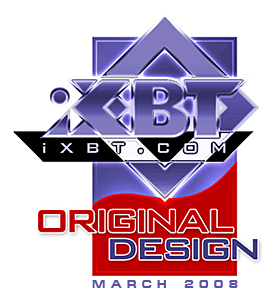 We express gratitude to
MSI and Maria Kislyakova for the provided graphics cards. PSU provided by TAGAN, Monitor provided by NVIDIA. Andrey Vorobiev (anvakams@ixbt.com) March 17, 2008 Write a comment below. No registration needed!
|
Platform · Video · Multimedia · Mobile · Other || About us & Privacy policy · Twitter · Facebook Copyright © Byrds Research & Publishing, Ltd., 1997–2011. All rights reserved. | |||||||||||||||||||||||||||||||||||||||||||||||||||||||||||||||